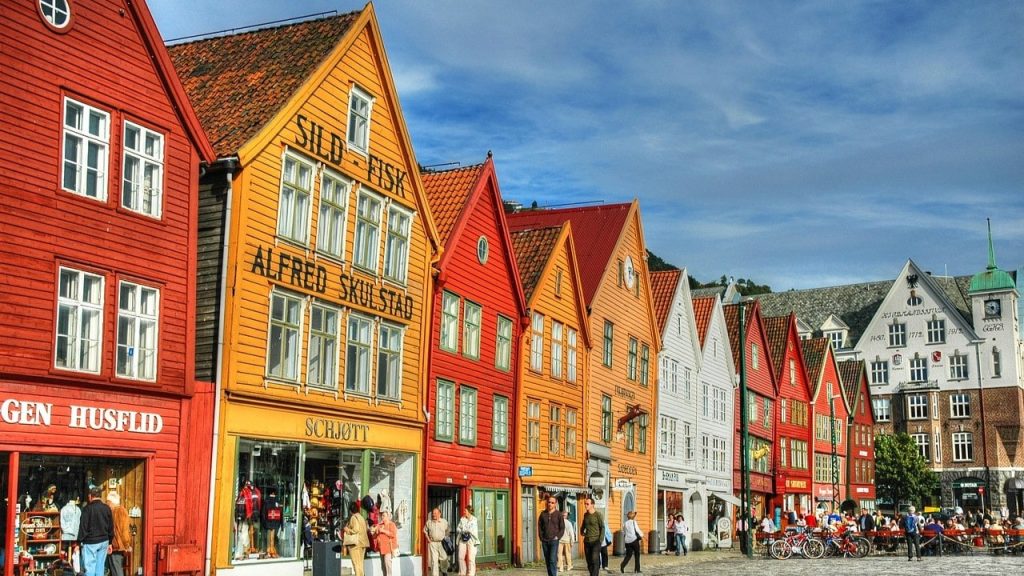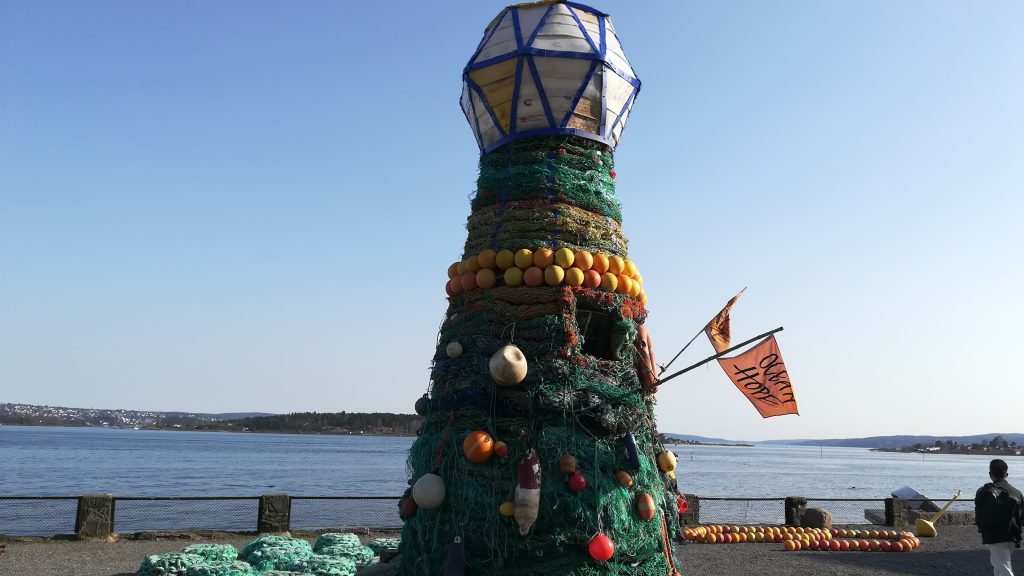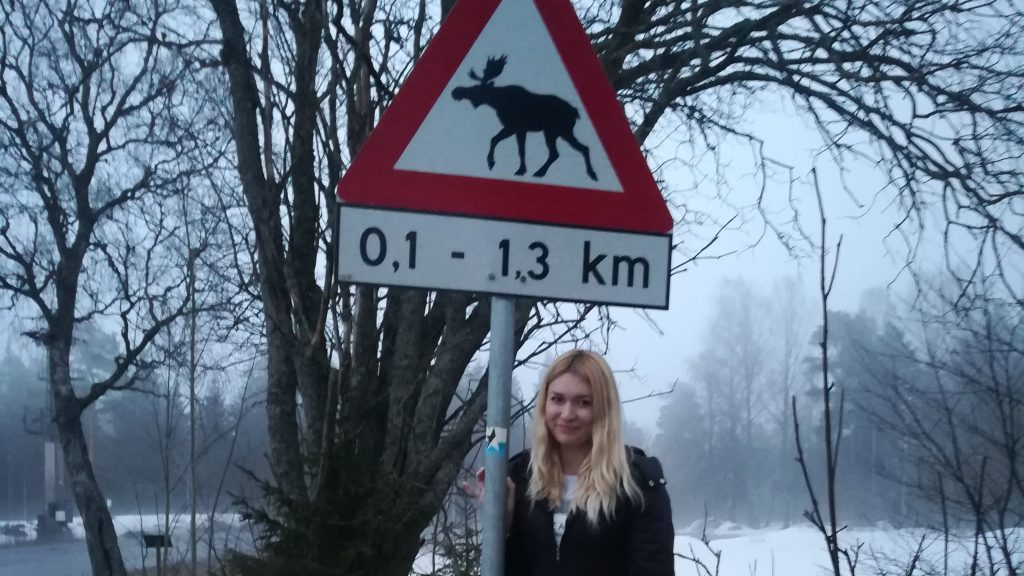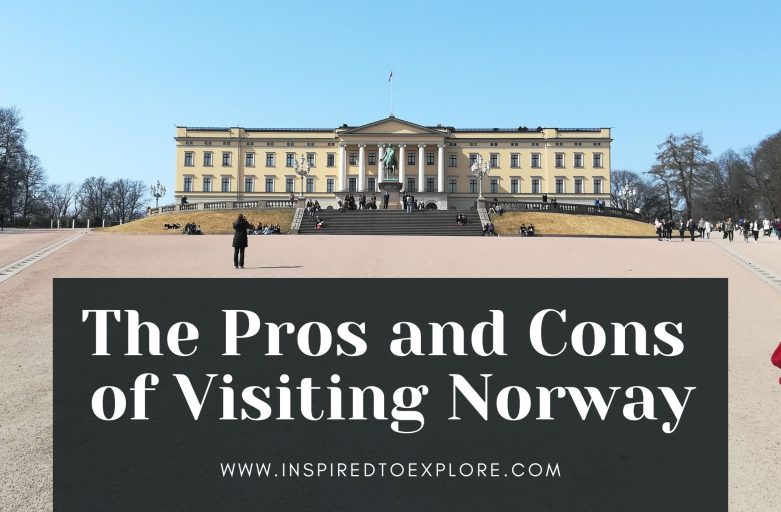Norway, often heralded as the Land of the Midnight Sun and the Northern Lights, is a destination that captivates travelers with its unparalleled natural beauty and rich cultural tapestry. From the majestic fjords to the historic Viking heritage, Norway offers an array of experiences that appeal to adventurers, history buffs, and nature lovers alike. Even if Norway is a good place to visit (and ‘good’ is an understatement – I would rather say incredible), it has its unique set of advantages and drawbacks that every prospective visitor should consider.
In this article, I’ll delve into the pros and cons of visiting Norway, providing you with a balanced view to help you make an informed decision. Even if you are already determined to explore this Scandinavian country, it’s highly recommended to have a realistic picture of what Norway is really like, so you can know what to expect.
Pros of Visiting Norway
Given that it is such a stunning country, it’s only fair to start listing the best reasons to visit Norway. In any case, you should know that the advantages outweigh the disadvantages, so let’s get started to discover why you should visit Norway.
1. Stunning Natural Landscapes
Norway is world-renowned mostly for its spectacular fjords, which are deep, glacially carved valleys filled with seawater.

Iconic fjords like Geirangerfjord and Nærøyfjord, both UNESCO World Heritage sites, offer breathtaking views, cascading waterfalls, and lush green cliffs. Visitors can take fjord cruises, kayak along the serene waters, or hike the surrounding trails to experience these natural wonders up close.
Also, Norway boasts numerous national parks that preserve its pristine wilderness. Jotunheimen National Park, known as the “Home of the Giants,” features some of the highest peaks in Northern Europe and extensive hiking trails. Rondane National Park, another highlight, offers rugged mountain landscapes and opportunities for wildlife spotting, including reindeer.
2. The Northern Lights Experience
One of the most magical experiences in Norway is witnessing the Northern Lights or Aurora Borealis.

Best seen in the winter months from regions like Tromsø and the Lofoten Islands, the Northern Lights paint the night sky with ethereal colors. This natural light show is a bucket-list attraction for many travelers.
2. Rich History
People from around the world find Norway’s history fascinating. This history is well-documented in the country’s numerous museums and historical sites. For example, The Viking Ship Museum in Oslo showcases remarkably preserved Viking ships and artifacts, offering a glimpse into the maritime prowess of the Vikings.

In Bergen, the Bryggen Hanseatic Wharf, with its colorful wooden buildings, reflects the city’s significance in the Hanseatic League’s trading empire.
3. Culture and traditions
Festivals are a unique way to discover and celebrate Norway’s culture and traditions. The Bergen International Festival, held annually in late spring, is the largest of its kind in the Nordic countries, featuring music, dance, literature, and theater. The Sami Easter Festival in Kautokeino highlights the indigenous Sami culture with reindeer races, joik (traditional Sami singing), and colorful costumes.
4. Traditional cuisine
Norwegian cuisine represents another good reason to visit the country and offers a delightful exploration of local flavors. Traditional dishes such as rakfisk (fermented fish), lutefisk (dried fish treated with lye), and brunost (brown cheese) provide a unique taste experience. Seafood lovers will particularly enjoy the fresh, high-quality salmon and cod.
5. One of the safest countries in the world
According to World Population Review, Norway ranked 24th in the list of safest countries in the world. Low crime rates and a strong sense of community contribute to a secure environment for tourists and even for solo female travelers. This safety extends to both urban and rural areas, so you can explore any place you want without constraints.

6. Sustainability and ecofriendliness
Norway’s commitment to environmental sustainability is evident in its pristine natural surroundings and clean urban spaces. The country’s rigorous environmental policies ensure that its landscapes remain unspoiled and its cities well-maintained.

Moreover, tap water is extremely safe to drink, so you don’t have to buy bottled water, therefore helping reduce plastic waste.
Read more: Ways to reduce plastic pollution while traveling.
7. Excellent healthcare and public services
Norway’s high standards of public services, including healthcare, are a notable benefit for visitors. While tourists are encouraged to have travel insurance, the availability of top-notch healthcare facilities adds a layer of reassurance.
8. Adventure Activities
Winter Sports: Norway is a winter sports paradise. Renowned ski resorts like Hemsedal and Geilo offer excellent skiing and snowboarding conditions. Additionally, activities such as dog sledding, ice fishing, and snowshoeing are popular in the snowy months, providing a variety of ways to enjoy the winter landscape.

Summer Activities: In the summer, Norway transforms into an outdoor enthusiast’s dream. Kayaking along the fjords, fishing in crystal-clear lakes, and cycling through scenic routes are just a few of the activities available. The Midnight Sun phenomenon in northern Norway extends daylight hours, allowing for extended outdoor adventures.
9. Wildlife Watching
Norway offers rich wildlife experiences. Whale-watching tours, particularly in the Vesterålen and Lofoten Islands, give visitors a chance to see majestic creatures like humpback whales and orcas. Bird watchers can visit places like Runde Island, home to one of Norway’s largest seabird colonies, including puffins and eagles.
You can also see reindeer, moose, arctic foxes and much more. Norway is also one of the few countries in the world where you can encounter polar bears in the wild. For this, you need to go to the Svalbard archipelago. A little note here: the best time to go see the polar bears is from June to September because the melted ice makes it easier to navigate the archipelago.

10. Virtually No Language Barrier
One of the significant advantages of visiting Norway is that virtually everyone speaks English, which greatly reduces the language barrier for travelers. Norwegians begin learning English at a young age and are generally very proficient, making it easy for visitors to communicate, ask for directions, and engage in everyday interactions. This widespread fluency in English extends to service industry workers, such as hotel staff, restaurant servers, and tour guides, ensuring that travelers can navigate their way around the country with ease and confidence. This linguistic accessibility enhances the overall travel experience, allowing visitors to fully immerse themselves in the culture and attractions without the stress of language misunderstandings.
Read more: Tips for overcoming language barriers in a foreign country.
Norway’s diverse attractions and high quality of life make it a compelling destination for travelers seeking both adventure and cultural enrichment. Whether you’re drawn to its natural wonders, historical depth, or outdoor activities, Norway offers a wealth of experiences that are sure to leave a lasting impression.
Cons of Visiting Norway
Of course, there are some disadvantages to visiting Norway. However, I think some of them are just some particularities that shouldn’t have a significant impact on your vacation, at least for the majority of you. Let’s discuss them one by one.
1. High Cost of Living
One of the most significant drawbacks of visiting Norway is the high cost of living. Accommodation, food, transportation, and activities can be considerably more expensive than in many other countries. Even basic expenses such as a meal at a mid-range restaurant or a simple cup of coffee can come with a steep price tag, which can quickly add up and strain a traveler’s budget.
Despite the high costs, there are ways to manage expenses while visiting Norway. Staying in hostels, budget hotels, or Airbnb rentals can reduce accommodation costs.
Booking.comCooking your own meals or eating at affordable eateries, such as bakeries and fast-food chains, can help save on food expenses. Additionally, taking advantage of Norway’s excellent public transportation system, including buses, trains, and ferries, can be more cost-effective than renting a car.
2. Weather Challenges
Cold Winters: Norway’s winters can be harsh, especially in the northern regions. Temperatures can drop significantly, and heavy snowfall is common, which can be challenging for those unaccustomed to extreme cold. The shorter daylight hours during the winter months can also be limiting for outdoor activities and sightseeing.

Unpredictable Weather: Even in the summer, Norway’s weather can be unpredictable. It is not uncommon to experience sudden changes, such as rain or cold snaps, even on what starts out as a sunny day. Travelers need to be prepared for varying weather conditions and pack accordingly to stay comfortable during their visit.
3. Accessibility Issues
Remote Locations: Many of Norway’s most stunning natural attractions, such as the fjords, national parks, and Northern Lights viewing spots, are located in remote areas. Reaching these locations can require lengthy travel times and multiple modes of transportation, which can be inconvenient and time-consuming for visitors with limited time.

Seasonal Accessibility: Certain attractions and activities in Norway are highly seasonal. For instance, some hiking trails and scenic routes are only accessible during the summer months due to snow and ice in the winter. Similarly, winter sports and Northern Lights viewing are best experienced during the colder months, which may not align with every traveler’s schedule.
4. Limited Nightlife
Outside of major cities like Oslo, Bergen, and Trondheim, Norway’s nightlife can be quite subdued. Small towns and rural areas may offer limited entertainment options in the evenings, with few bars, clubs, or late-night events. This can be a downside for travelers seeking vibrant nightlife and social activities.
5. Alcohol Restrictions
Norway has strict regulations on the sale and consumption of alcohol. Alcohol can only be purchased at licensed stores called Vinmonopolet, and prices are relatively high due to taxes. When I tried to buy the beer you can see in the image below, the cashier asked me to show an ID to check my age. The problem is that Romanian IDs do not clearly show the date of birth and I had to explain that the first 6 figures of my personal identification number is my birthdate in the format YYMMDD. She didn’t believe me at first and it was pretty hard to purchase that beer eventually, and you need to take into account that it might happen to you as well if your national ID is similar.

Bars and restaurants also tend to have higher prices for alcoholic beverages, which can limit the nightlife experience for some visitors.
6. Gambling is (mostly) Illegal
If you’re a big fan of gambling, tough luck. In Norway, gambling is heavily regulated and primarily controlled by two state-owned entities: Norsk Tipping and Norsk Rikstoto. These organizations focus on lotteries, sports betting, and horse racing, with the primary aim of funding sports, culture, and humanitarian causes. As a result, traditional casinos and a wide variety of gambling options that are often available to tourists in other destinations are largely absent in Norway. For tourists accustomed to having access to a range of gambling experiences, this can be a significant limitation. Online gambling is also restricted and closely monitored, further reducing the opportunities for tourists to engage in gambling activities during their stay.
I’ve never been a fan of gambling, but when I went to Oslo, my travel buddy suggested we go to a casino. Since I’ve never been inside a casino before, I thought it would be cool to experience that in a foreign country, but we actively started looking for one, we found out about these regulations and we abandoned the idea.
7. Many Places Are Cash-Free
When coming to Norway, be prepared to pay mostly by card. Many places are exclusively cash-free and if you’re not well-prepared for this, it can be an inconvenience, like it was for me when I got to my hotel and I didn’t have all the money to pay for the accommodation on my card, as I was hoping to pay cash. Big mistake, as they refused to check me in and had to ask a friend to send the money I needed.
While Norway offers a plethora of incredible experiences, it is essential to consider these potential downsides when planning your trip. By being aware of the high costs, weather challenges, accessibility issues, and limited nightlife, travelers can better prepare and adjust their expectations to ensure a memorable and enjoyable visit to this beautiful country.
So is Norway worth visiting? Overall, the answer is yes! If you can manage the drawbacks, this country has so much to offer. For me, the real major con of visiting Norway was the cost, but I knew what to expect before leaving home and I was well prepared. And that’s the whole point of this article, for you to be aware of all the aspects that come with the Norwegian experience and know what to expect in order to have the best holiday possible. Now I’m really curious what you think. Do you still want to visit Norway or did you change your mind? Leave your thoughts in the comments below.
